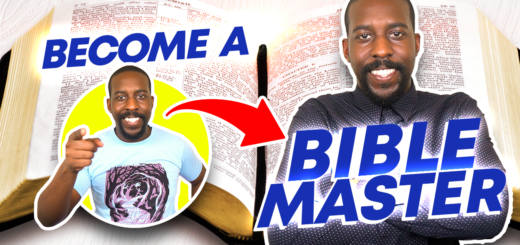John’s Mind Blowing Vision of Jesus in Revelation 1
John’s Vision of Jesus in Revelation (Revelation 1:9-19)
John sees a vision of Jesus in Revelation chapter 1 that knocks him off his feet. Revelation is a book rich with symbolism. It’s a book that excites Christians, because it talks about the end times and Christ’s return. However, at times, Christians find it hard to grasp in full.
This post will walk you through John’s vision of Jesus in Revelation in chapter 1, which in many ways, sets the stage for the rest of the book.
Today, we will cover verses 9-19. If there’s something else in Revelation you need help understanding, let me know.
The Context of John’s Vision (Revelation 1:9-10)
Let’s start with verse 9 because it gives us some nice context for the book:
“I John, who also am your brother, and companion in tribulation, and in the kingdom and patience of Jesus Christ, was in the isle that is called Patmos, for the word of God, and for the testimony of Jesus Christ.”
John mentions himself directly by name in this book, which he doesn’t do in his Gospel. Like his epistles, Revelation has a different, and very personal feel to it.
As the book of Acts tells us, persecution and tribulation hit the church, and Revelation says John is on the isle of Patmos. Tradition says he was exiled because of his Christian message.
Patmos is in Greece, northwest of Israel. John says he was there for the Word of God and the testimony of Jesus. This is an example of a double entendre, a double meaning.
John was exiled to Patmos because of the Word of God and the testimony of Jesus, but he is also there to receive the Word of God, and the testimony of Jesus. This is what the book of Revelation is.
This double meaning theme continues into the next verse, which says:
“I was in the Spirit on the Lord’s day, and heard behind me a great voice, as of a trumpet.”
You can read this both ways: he was in the Spirit on the Sabbath day, or he was in the Spirit on the day of the Lord, meaning the time when the events he’s about to describe are happening.
Throughout the Bible, the phrase “the Day of the Lord” appears repeatedly, referring to the climactic day when God comes to judge.
The Symbols in Revelation and Their Old Testament Roots (Revelation 1:11-13)
It’s important to note that several symbols in Revelation are explained within the book itself as you keep reading. However, many of the symbols allude back to the Old Testament. The better you know the Old Testament, the easier it is to understand Revelation.
There’s an implied expectation to know the Old Testament, as is the case with many New Testament books.
The important thing to note is, John was in the Spirit. This revelation is from God, no pun intended 🙂 .
John says he hears a great voice behind him, sounding like a trumpet. Trumpets were used in the Bible for safety, to prepare for war, and to rally people together.
Listen to what he hears before he turns around to see anything in verse 11:
“Saying, I am Alpha and Omega, the first and the last: and, What thou seest, write in a book, and send [it] unto the seven churches which are in Asia; unto Ephesus, and unto Smyrna, and unto Pergamos, and unto Thyatira, and unto Sardis, and unto Philadelphia, and unto Laodicea.”
John hears a great voice behind him saying, “I am Alpha and Omega, the first and the last.”
Alpha and Omega are the first and last letters of the Greek alphabet. The first and the last is one way God identifies Himself as the eternal one. John is doing something powerful here, much like how he starts his Gospel with “In the beginning…”
John’s Revelation: The Vision Unfolds (Revelation 1:12-15)
John turns to see the voice speaking to him, and the first thing he notices is not the person speaking but seven golden candlesticks. These are lampstands—seven lights. John sees these lampstands in a circle, which becomes clearer in the next verse.
It also helps us understand why he mentions them first, before the person he turned to see. He would likely have seen the lamps first before moving to the person speaking. We find out later in the chapter that these lampstands represent the seven churches he’s writing too.
It’s interesting to note that there were seven lamps in the tabernacle Moses built next to God’s presence. This was a design given to Moses by God.
Zechariah also mentions seven lampstands, referring to the “eyes” of the Lord who see the whole earth. This is all gearing up for John to say he sees God, similar to how he does in his Gospel.
John Sees A Man (Revelation 1:13-15)
In verse 13, it says:
“And in the midst of the seven candlesticks [one] like unto the Son of man, clothed with a garment down to the foot, and girt about the paps with a golden girdle.”
In the middle of these seven lampstands, John sees someone who looks human, but that’s not the surprising part.
God appeared in flesh in Genesis, and Daniel chapter 7 has a similar vision. The man John sees has a garment from the top down to His ankles, and around His chest is a golden belt.
The girdle would hold garments together and could be used to hold other things. This is the person who spoke from behind him that John has turned to see.
Verses 14-15 add to John’s description:
“His head and [his] hairs [were] white like wool, as white as snow; and his eyes [were] as a flame of fire; and his feet like unto fine brass, as if they burned in a furnace; and his voice as the sound of many waters.”
John emphasizes the white color of His head and hairs. In both Revelation and the Old Testament, white often symbolizes purity and the wisdom that comes with age.
For example, in Isaiah 1, God talks about the people’s sin:
“Though your sins are as scarlet, they will be white as snow; though they are red like crimson, they shall be as wool.”
This is common Hebrew parallelism, where two things that mean the same thing, are expressed in different ways.
Snow is white, and wool is white—often referring to purity. This is why when Daniel sees a man with white hair in Daniel 7, God is called the Ancient of Days. It points to His wisdom as the eternal one, and His complete purity as the Holy One of Israel.
Interpreting the Vision: Symbolism and Meaning (Revelation 1:16-17)
This passage in Revelation is not saying He was Caucasian, or black. This is evident when you consider the context of the verses together.
Some interpret the phrase “white like wool” as referring to the texture of His hair, using it to argue that He was black, but this interpretation does not hold up under scrutiny.
John is seeing all this imagery, and it all points to something deeper. Verse 14 also mentions His eyes being like a flame of fire, emphasizing focus, intent, and judgment.
Verse 15 mentions His feet like brass that is burned in a furnace. Like the white head isn’t speaking about color, neither are the feet.
Brass symbolizes refinement and judgment, much like the brazen serpent in Numbers 21, which symbolized sin being judged. All who looked to the brazen serpent on the pole were saved—a powerful preview of the cross, as Jesus tells us in John 3.
The altar in the temple for offerings was brass, symbolizing judgment and refinement repeatedly. John also describes His voice as sounding like many waters, indicating that it was loud, like many people speaking at once.
Verse 16 says:
“And he had in his right hand seven stars: and out of his mouth went a sharp two-edged sword: and his countenance [was] as the sun shineth in his strength.”
Seven stars in His right hand. Seven is significant throughout Revelation (let alone the whole Bible). John mentions it often: seven churches, seven lampstands, seven stars, and so on.
In verse 20, we learn that the seven stars are the angels of the seven churches, and the lampstands are the seven churches.
This again shows the symbolic nature of this vision.
The sharp two-edged sword coming out of His mouth is not literal. This is a common problem when trying to take Revelation too literally.
You must be consistent in any sound interpretation, unless something in the text makes it clear otherwise. Hebrews 4:12 mentions God’s Word as sharper than any two-edged sword, which is likely what John is referencing here.
Psalm 149 or Ephesians 6 allude to this, but Hebrews 4 spells it out explicitly.
His countenance was like, the sun shining in its strength, like the sun at its highest and brightest. This refers to His glory and links back to His head being white, as well as to the Mount of Transfiguration when Jesus revealed His glory.
The Impact of the Vision on John (Revelation 1:17-19)
In verse 17, John says:
“And when I saw him, I fell at his feet as dead. And he laid his right hand upon me, saying unto me, Fear not; I am the first and the last.”
John hears the voice say, “I am the first and the last,” and when he turns around, he sees this glorious person and falls to the ground as if dead. He was undone and could not stand in the presence of the man.
The man lays His right hand on John—the hand that held the stars—and says for the second time, “I am the first and the last; don’t be afraid.”
Up until this point, if you knew the Old Testament but not Jesus, you would think this person is God the Father. But the next verse changes everything.
This is not God the Father speaking, but God the Son.
John Sees God The Son
In verse 18, the person John sees identifies Himself further by saying:
“I [am] he that liveth, and was dead; and, behold, I am alive for evermore, Amen; and have the keys of hell and of death.”
Jesus tells John that He is the Living One, who was dead and is now alive forevermore. He says He is the first and the last. This is why John fell at His feet as if dead: He realized who this man was—the resurrected, glorified Christ.
Jesus tells him in verse 19 to write down what he has seen, what is now, and what will take place later.
He saw Jesus. The things which are were the churches. And what will come after is the Day of the Lord and the New Jerusalem.
John’s vision of Jesus in Revelation chapter 1 is what he has seen, the letters to the seven churches in chapters 2-3 are what is now, and chapters 4-22 describe what will take place later.
The book has a built-in table of contents provided by Jesus Himself.
There’s much more tucked away in Revelation, but until next time. God Bless.
WATCH VIDEO
























Recent Comments